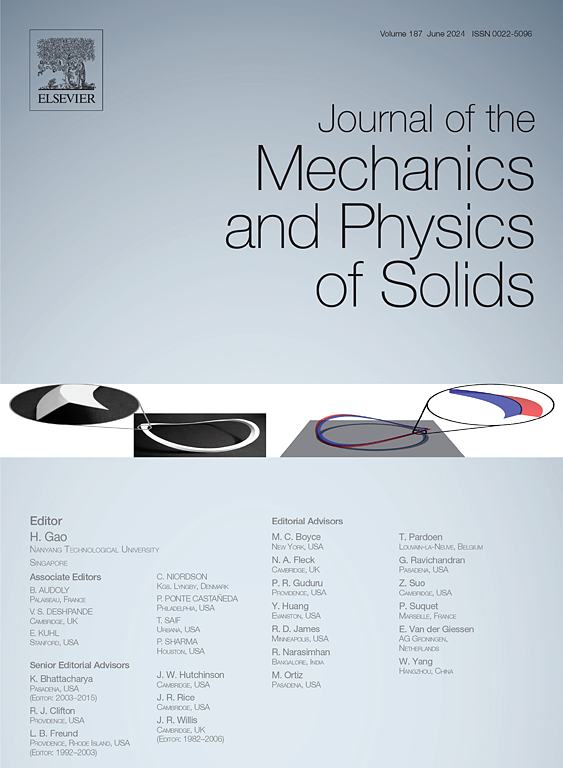Measurement of temperature-dependent viscoelastic compressibility of highly-filled thermosets using inert gas pressure
IF 5
2区 工程技术
Q2 MATERIALS SCIENCE, MULTIDISCIPLINARY
引用次数: 0
Abstract
Highly filled thermosets are widely used to encapsulate chips in the semiconductor packaging industry. A complete set of viscoelastic properties are required for package designs with optimum mechanical reliability. A novel test method, based on inert gas pressure, is proposed and implemented to measure the temperature-dependent viscoelastic hydrostatic creep compliance (or compressibility) of filled thermosets. The method utilizes linearly increasing pressure to mitigate a heat generation problem caused by instantaneous gas pressure application. The hereditary integral for the linear pressure application is derived, and the corresponding normal equations are developed to obtain the generalized Kelvin model constants analytically. The proposed method is implemented using an epoxy-based molding compound. Complete implementation schemes are described, and the compressibility master curve is presented. The validity of the proposed method is verified by supplemental long-term hydrostatic creep tests. The accuracy and repeatability of the proposed method are also discussed.
用惰性气体压力测量高填充热固性材料的温度依赖性粘弹性压缩性
高填充热固性材料在半导体封装行业中广泛用于封装芯片。为了使包装设计具有最佳的机械可靠性,需要一整套完整的粘弹性性能。提出并实现了一种基于惰性气体压力的新型测试方法,用于测量填充热固性材料的温度依赖性粘弹性静压蠕变柔度(或可压缩性)。该方法利用线性增加的压力来减轻由瞬时气体压力施加引起的热产生问题。导出了线性压力作用的遗传积分,并建立了相应的正规方程,以解析地得到广义开尔文模型常数。所提出的方法是使用一种环氧基成型化合物来实现的。给出了完整的实现方案,并给出了可压缩性主曲线。通过长期水压蠕变试验验证了该方法的有效性。本文还讨论了该方法的准确性和可重复性。
本文章由计算机程序翻译,如有差异,请以英文原文为准。
求助全文
约1分钟内获得全文
求助全文
来源期刊
CiteScore
9.80
自引率
9.40%
发文量
276
审稿时长
52 days
期刊介绍:
The aim of Journal of The Mechanics and Physics of Solids is to publish research of the highest quality and of lasting significance on the mechanics of solids. The scope is broad, from fundamental concepts in mechanics to the analysis of novel phenomena and applications. Solids are interpreted broadly to include both hard and soft materials as well as natural and synthetic structures. The approach can be theoretical, experimental or computational.This research activity sits within engineering science and the allied areas of applied mathematics, materials science, bio-mechanics, applied physics, and geophysics.
The Journal was founded in 1952 by Rodney Hill, who was its Editor-in-Chief until 1968. The topics of interest to the Journal evolve with developments in the subject but its basic ethos remains the same: to publish research of the highest quality relating to the mechanics of solids. Thus, emphasis is placed on the development of fundamental concepts of mechanics and novel applications of these concepts based on theoretical, experimental or computational approaches, drawing upon the various branches of engineering science and the allied areas within applied mathematics, materials science, structural engineering, applied physics, and geophysics.
The main purpose of the Journal is to foster scientific understanding of the processes of deformation and mechanical failure of all solid materials, both technological and natural, and the connections between these processes and their underlying physical mechanisms. In this sense, the content of the Journal should reflect the current state of the discipline in analysis, experimental observation, and numerical simulation. In the interest of achieving this goal, authors are encouraged to consider the significance of their contributions for the field of mechanics and the implications of their results, in addition to describing the details of their work.

 求助内容:
求助内容: 应助结果提醒方式:
应助结果提醒方式:


